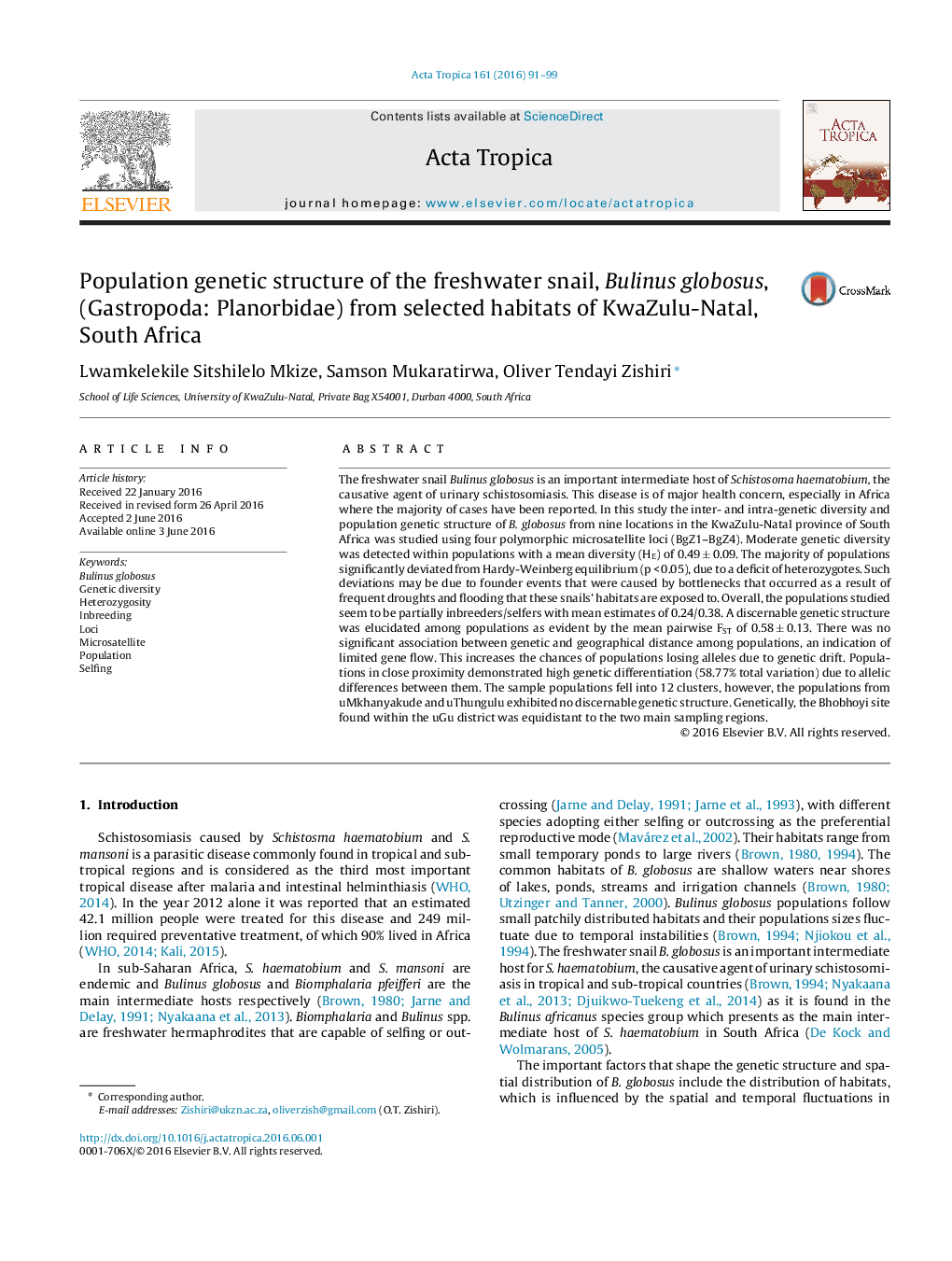| کد مقاله | کد نشریه | سال انتشار | مقاله انگلیسی | نسخه تمام متن |
|---|---|---|---|---|
| 3393730 | 1592763 | 2016 | 9 صفحه PDF | دانلود رایگان |

• Population genetic parameters were estimated.
• Microsatellites were used.
• Bulinus globosus were genetically diverse.
• There were deviations from H-W equilibrium.
• Populations were in twelve clusters.
The freshwater snail Bulinus globosus is an important intermediate host of Schistosoma haematobium, the causative agent of urinary schistosomiasis. This disease is of major health concern, especially in Africa where the majority of cases have been reported. In this study the inter- and intra-genetic diversity and population genetic structure of B. globosus from nine locations in the KwaZulu-Natal province of South Africa was studied using four polymorphic microsatellite loci (BgZ1–BgZ4). Moderate genetic diversity was detected within populations with a mean diversity (HE) of 0.49 ± 0.09. The majority of populations significantly deviated from Hardy-Weinberg equilibrium (p < 0.05), due to a deficit of heterozygotes. Such deviations may be due to founder events that were caused by bottlenecks that occurred as a result of frequent droughts and flooding that these snails’ habitats are exposed to. Overall, the populations studied seem to be partially inbreeders/selfers with mean estimates of 0.24/0.38. A discernable genetic structure was elucidated among populations as evident by the mean pairwise FST of 0.58 ± 0.13. There was no significant association between genetic and geographical distance among populations, an indication of limited gene flow. This increases the chances of populations losing alleles due to genetic drift. Populations in close proximity demonstrated high genetic differentiation (58.77% total variation) due to allelic differences between them. The sample populations fell into 12 clusters, however, the populations from uMkhanyakude and uThungulu exhibited no discernable genetic structure. Genetically, the Bhobhoyi site found within the uGu district was equidistant to the two main sampling regions.
Journal: Acta Tropica - Volume 161, September 2016, Pages 91–99